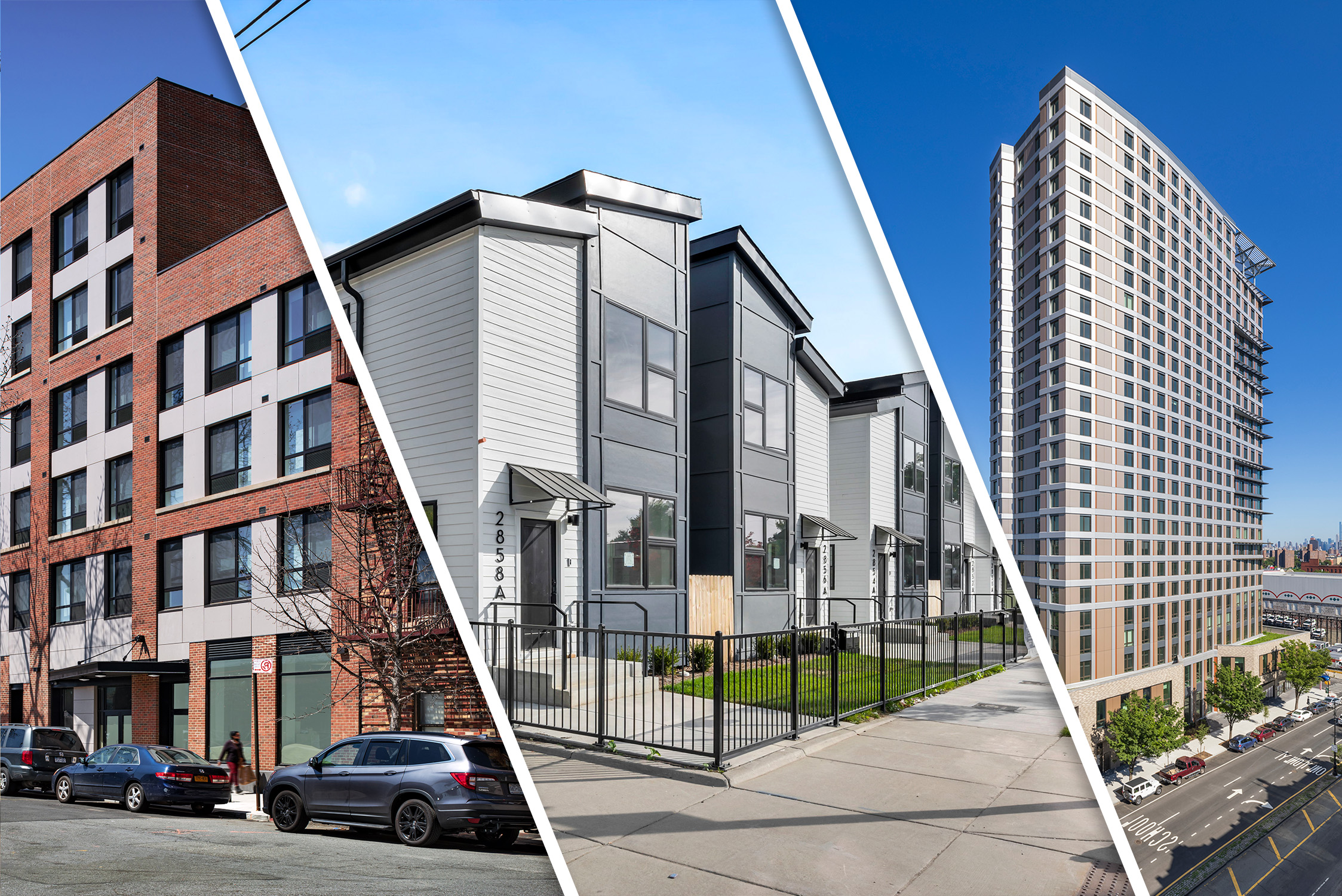In our latest call for entries, Building Design+Construction collected over 20 multifamily projects with a focus on affordable housing. These three developments faced certain obstacles during their building processes—from surrounding noise suppression to construction methodology.
This article is part of BD+C’s 2023 affordable multifamily project roundup. While this article focuses on projects that faced unique challenges during their building processes, other categories include Passive House-designed developments, mixed-use communities, and more. The entire list of projects can be found here.
683 Thwaites Place
Bronx, N.Y.
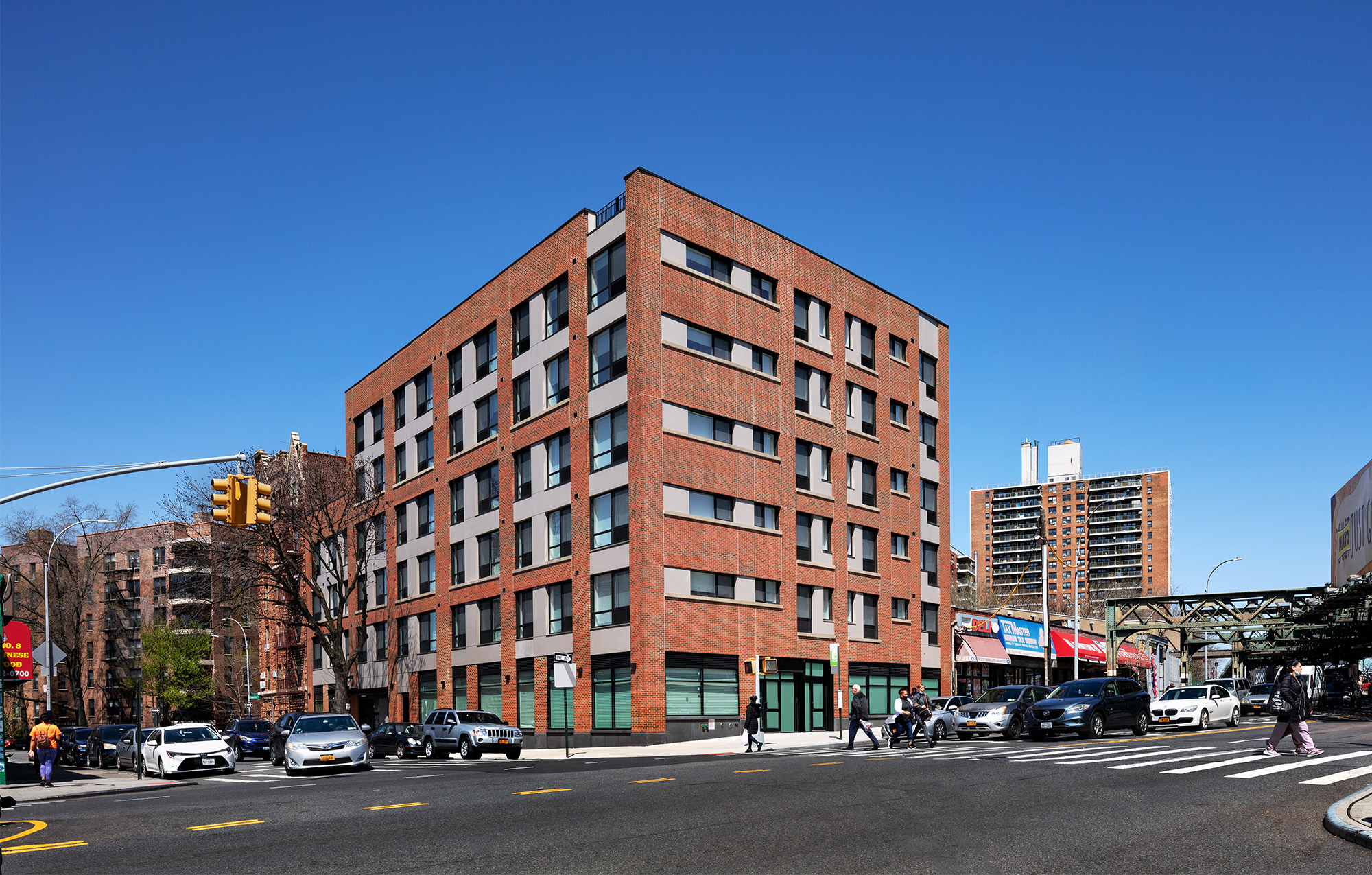
683 Thwaites Place is a for-profit development featuring 36 high-quality affordable apartments, street-level retail, and community spaces. The surrounding Allerton neighborhood of the Bronx presented an ideal opportunity for developer Volmar Construction: An area where market-rate units rent at rates only marginally higher than those earmarked as affordable.
The site—under 4,000 sf and directly facing an elevated platform serving subway trains—presented multiple challenges. For one, the typical block-and-plank technique was a nonstarter, so architect RKTB selected a metal “deep deck” system as an alternative approach. Additionally, the architects had to devise a way to reduce the levels of noise from passing trains for residents, and also complete a thorough review process to ensure the development would pass muster with the Metropolitan Transit Authority (MTA). RKTB worked with specialty consultants for both MTA compliance and noise mitigation, passing many levels of review and approval before construction could even commence.
The façade design tackled the noise issue by minimizing window openings on the side facing the train and elevating them to almost a clerestory height, compensated for by openings to bring in light and air on other sides. Only the bathroom and kitchen of a single unit on each floor is located along the train-side wall. Additionally, the sustainably designed building incorporates rooftop solar panels and a high-performance thermal envelope as strategies for reducing energy costs.
On the Building Team:
Developer, GC: Volmar Construction
Architect, Interiors: RKTB Architects
Structural Engineer: Brooker Engineering
MEP Engineer: Joselow & Associates
Green-Building Consultant: The Association for Energy Affordability, Inc. (AEA)
Building Code Expeditor: Nagan Ex, Inc.
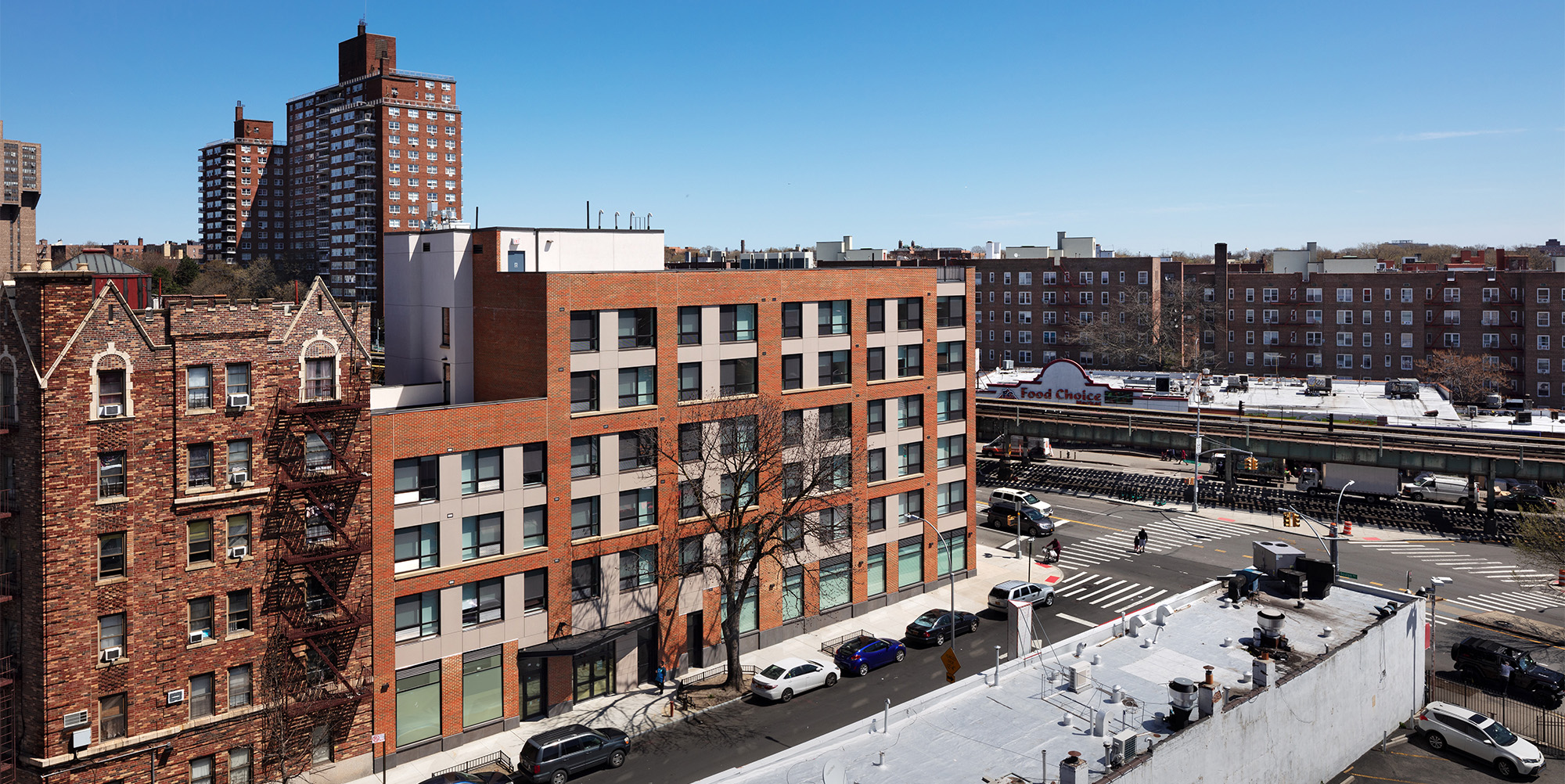
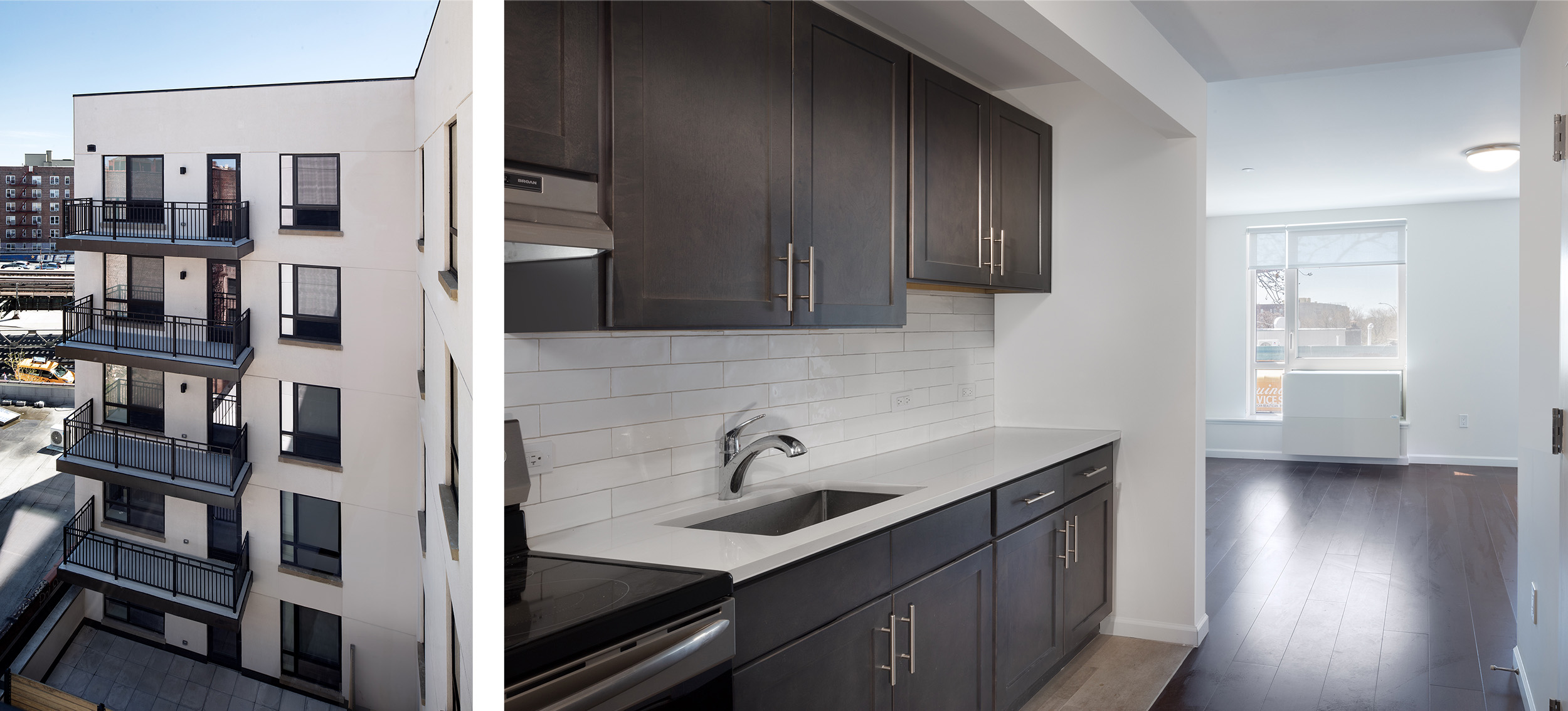
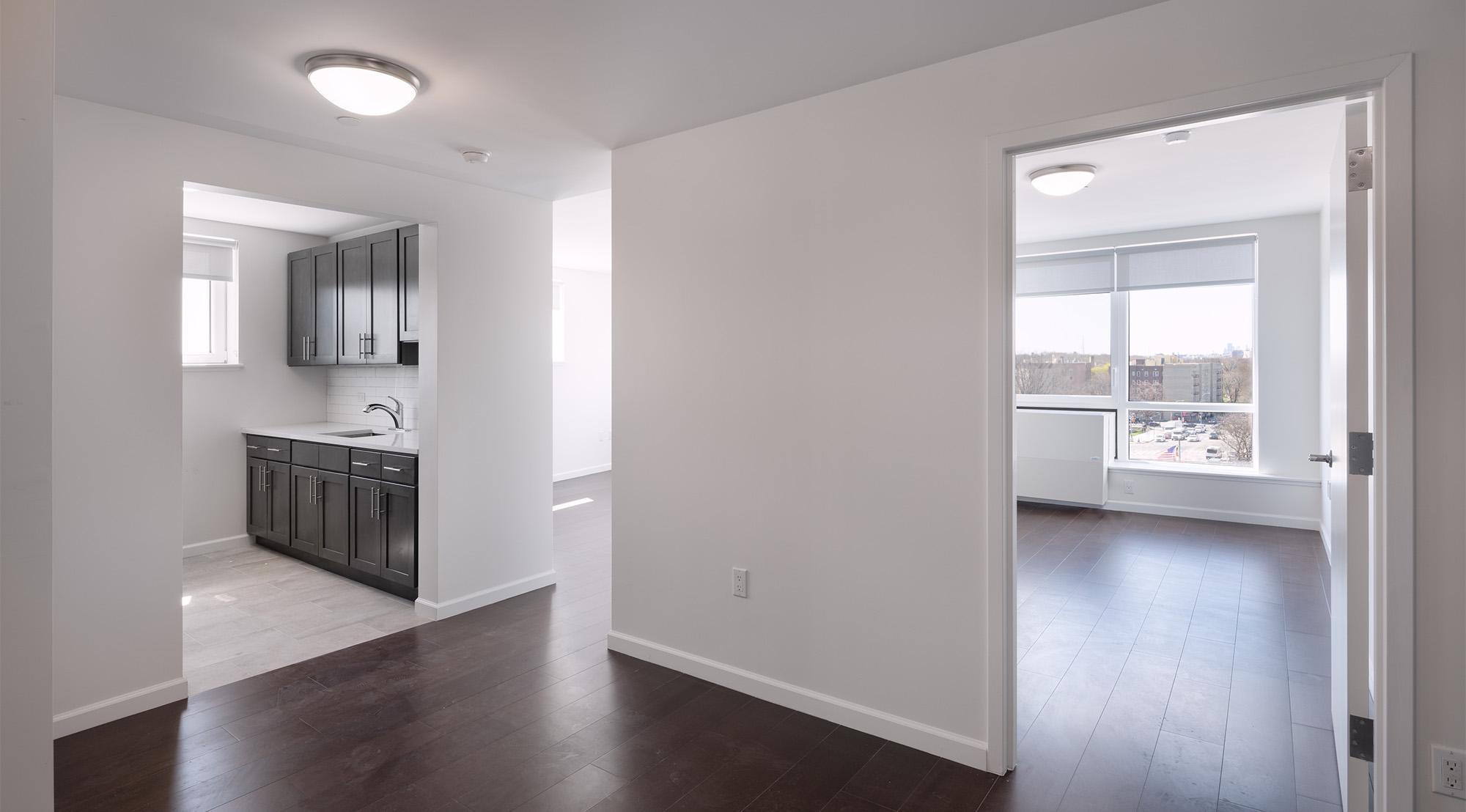
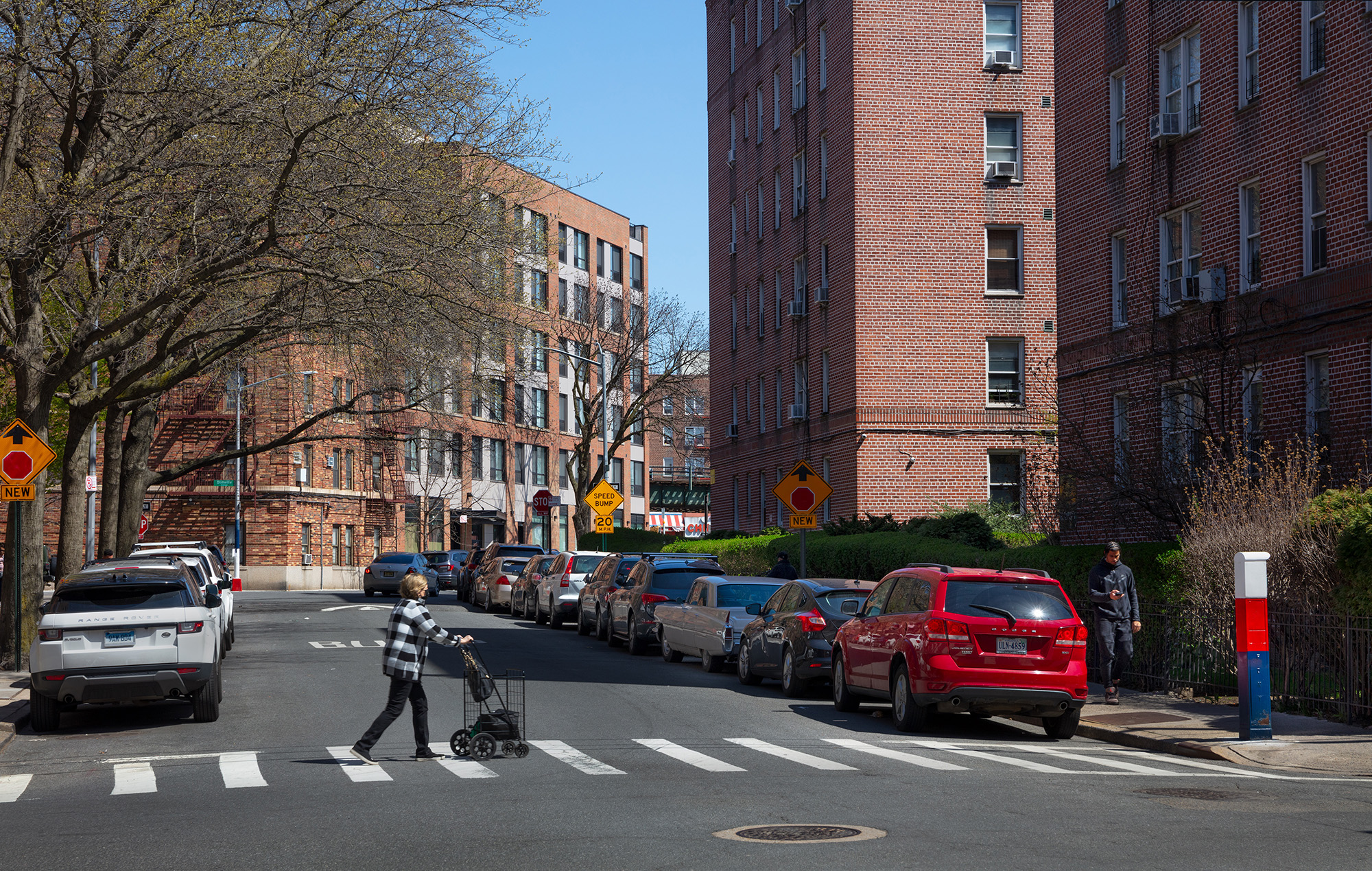
Harrison Row Townhomes
Chicago, Ill.
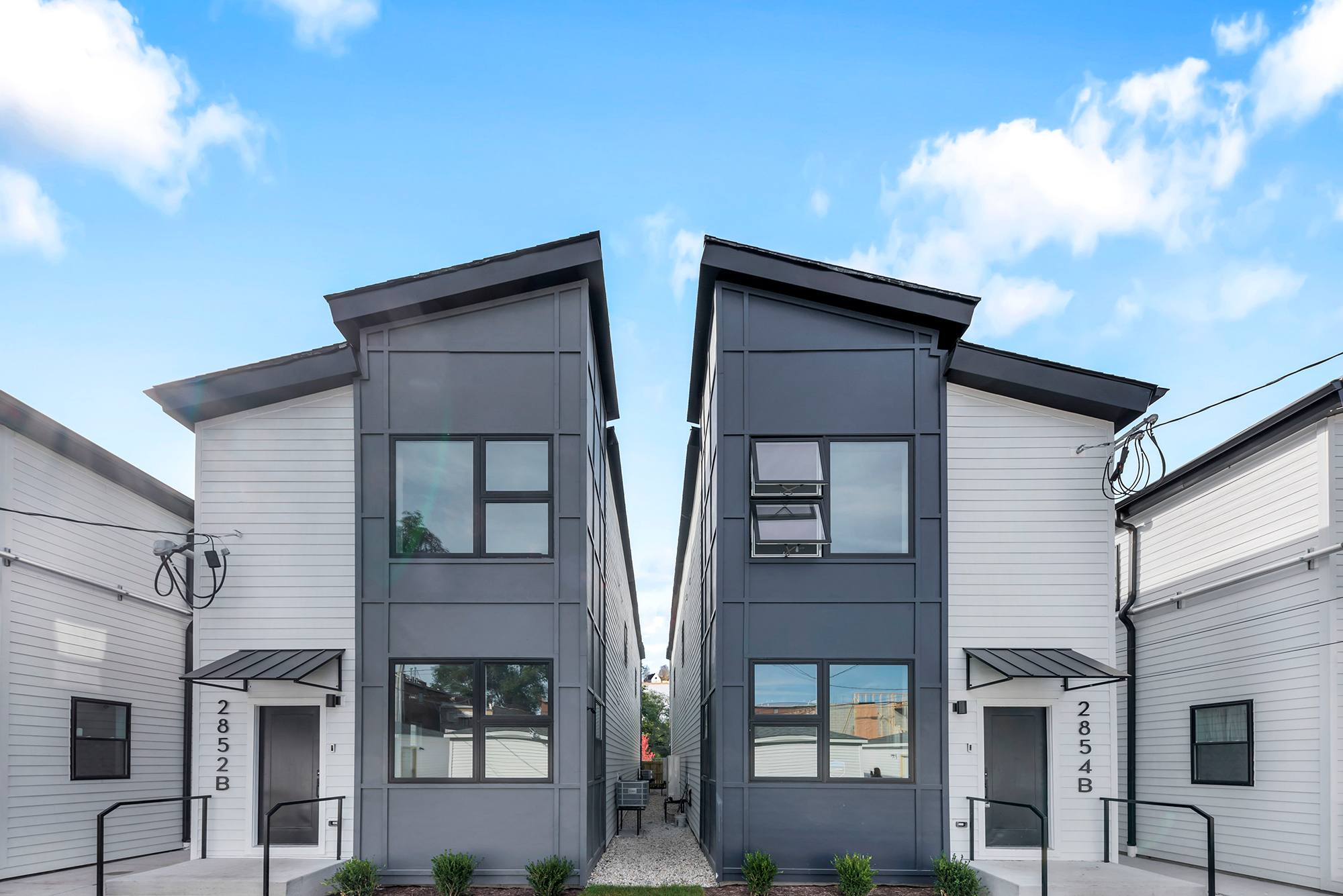
Harrison Row Townhomes is a 40-unit housing community in East Garfield Park, Chicago, Ill., for households earning up to 120% of the area’s median income (AMI). Twenty-eight of the units were built by Chicago-based Kinexx Modular Construction, marking the first townhome application of the company’s modular designs, with residences placed back-to-back rather than side-by-side. The residences at Harrison Row are all family-sized, with three or four bedrooms and 1.5 to 2.5 baths—and, uniquely, are for-sale rather than rental.
Structured partnered with Fain’s Development, LLC, a Black-owned developer based nearby in East Garfield Park, on the project – first as a mentor during Phase One, then as a joint venture partner on two of the 28 modular units in Phase Two. Kinexx manufactured the modules in its Southwest Side factory and transported them to the site for assembly on a standard perimeter foundation. When complete, the homes are indistinguishable from those built using traditional construction methods, with no seams visible. Kinexx is the first company to design, build and install a modular home in Chicago, with plans customized to the city’s typical lot size.
On the Building Team:
Developer: Structured Development
Architects: Axios Architects, Ellipsis Inc.
Structural/Civil Engineers: Webster, McGrath & Ahlberg, Ltd., Kinexx Modular Construction
MEP Engineers: Axios, Ellipsis Inc
Landscape Architects: Reveal, First Choice Landscaping, Diaz Landscape
General Contractor: Kinexx Modular Construction, Chicago Common
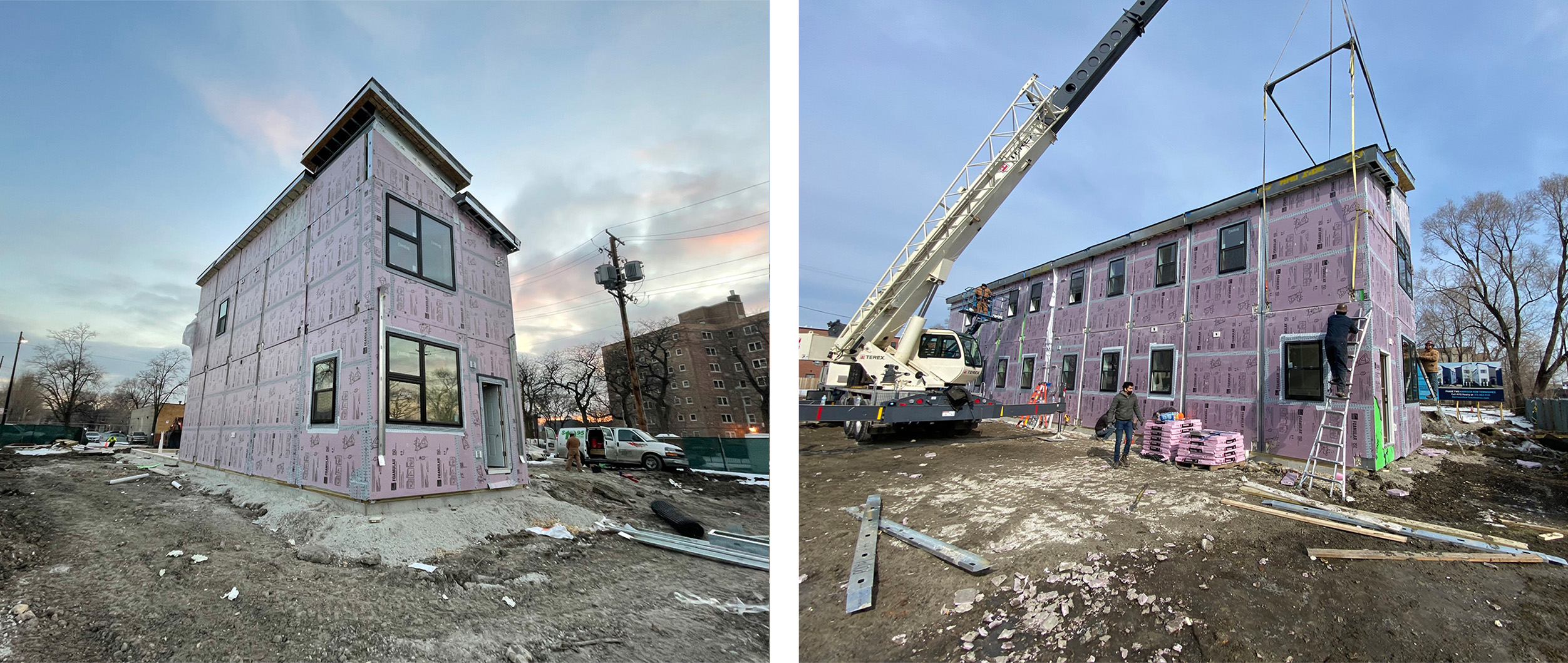
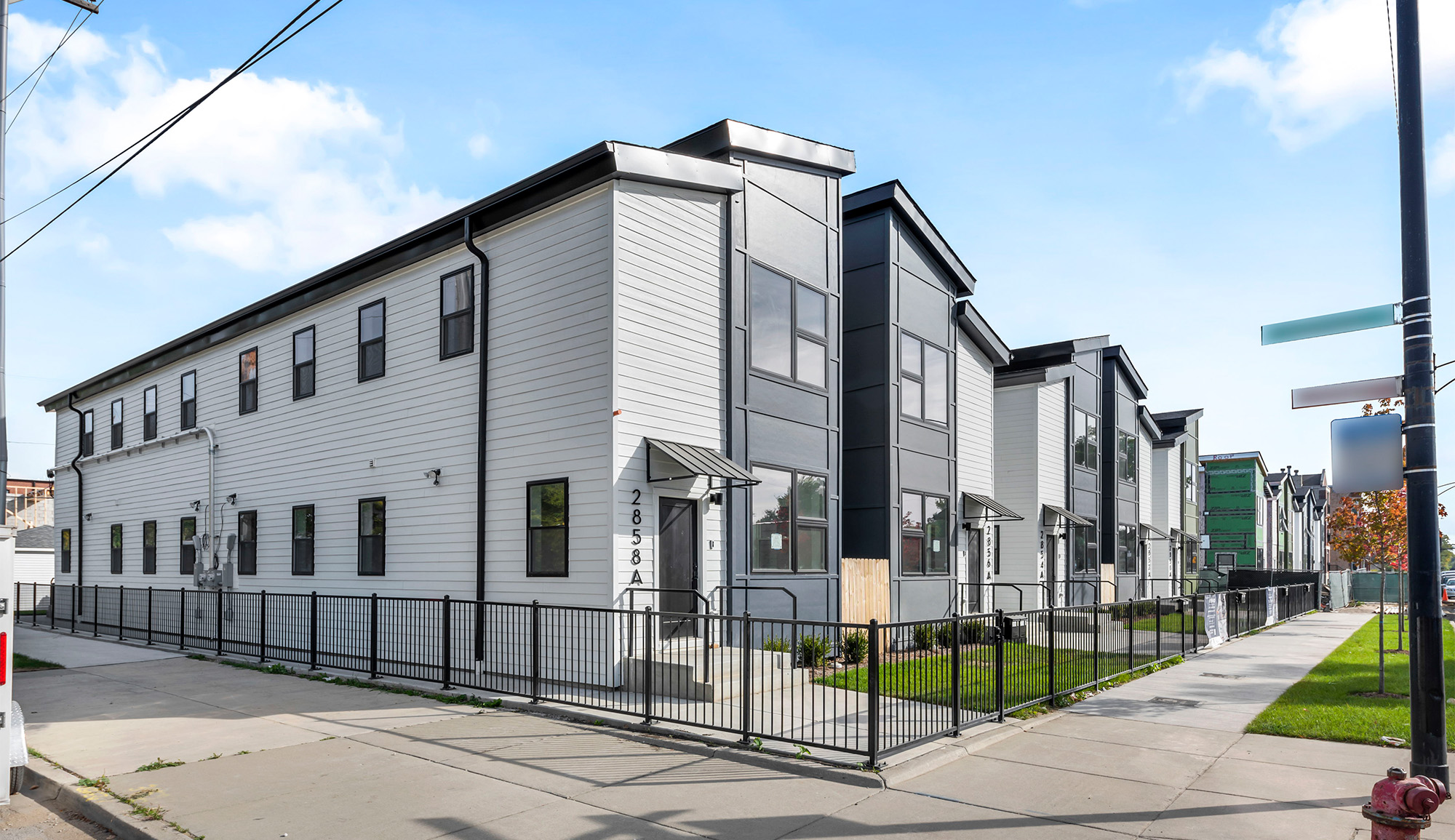
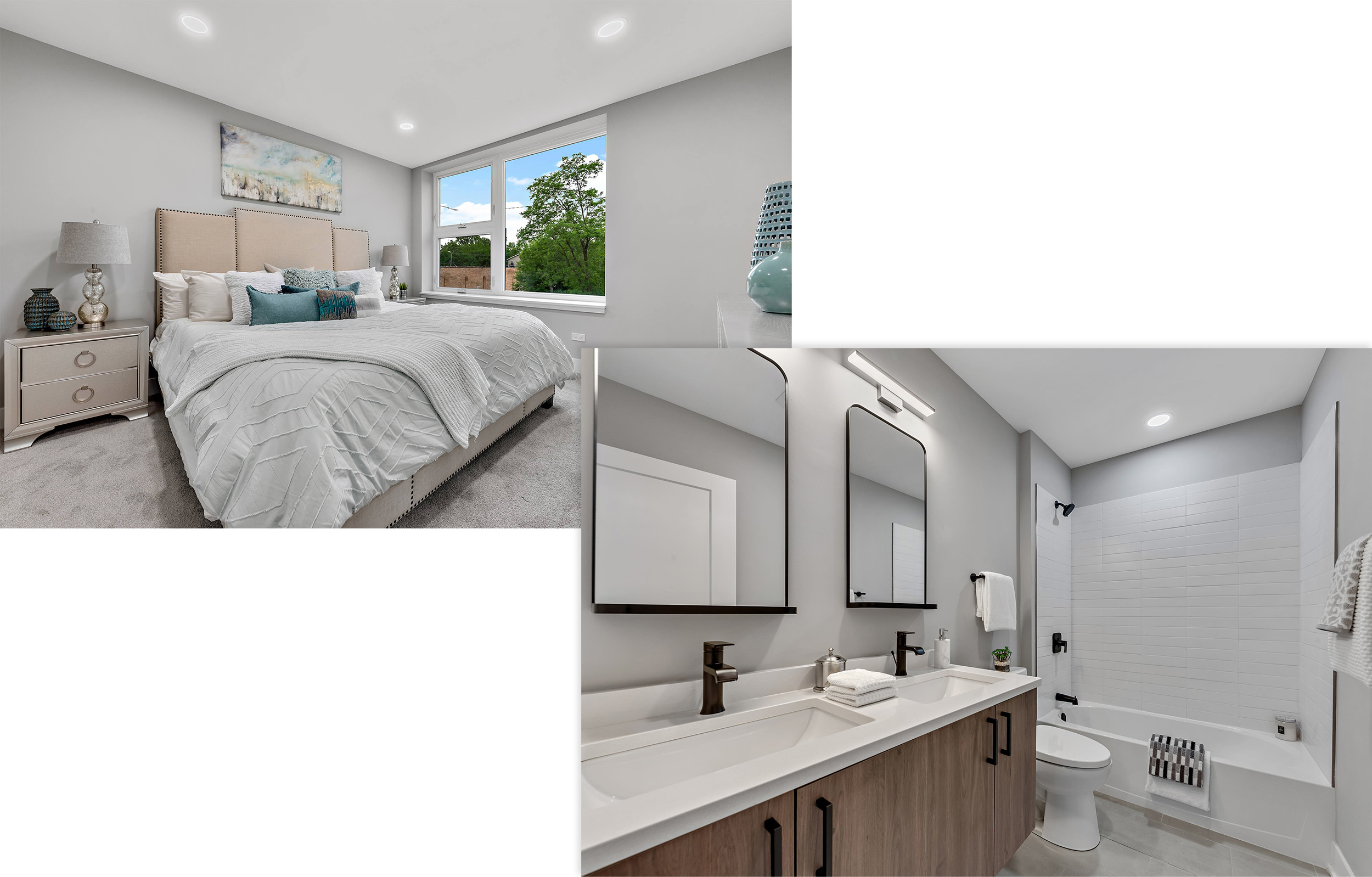
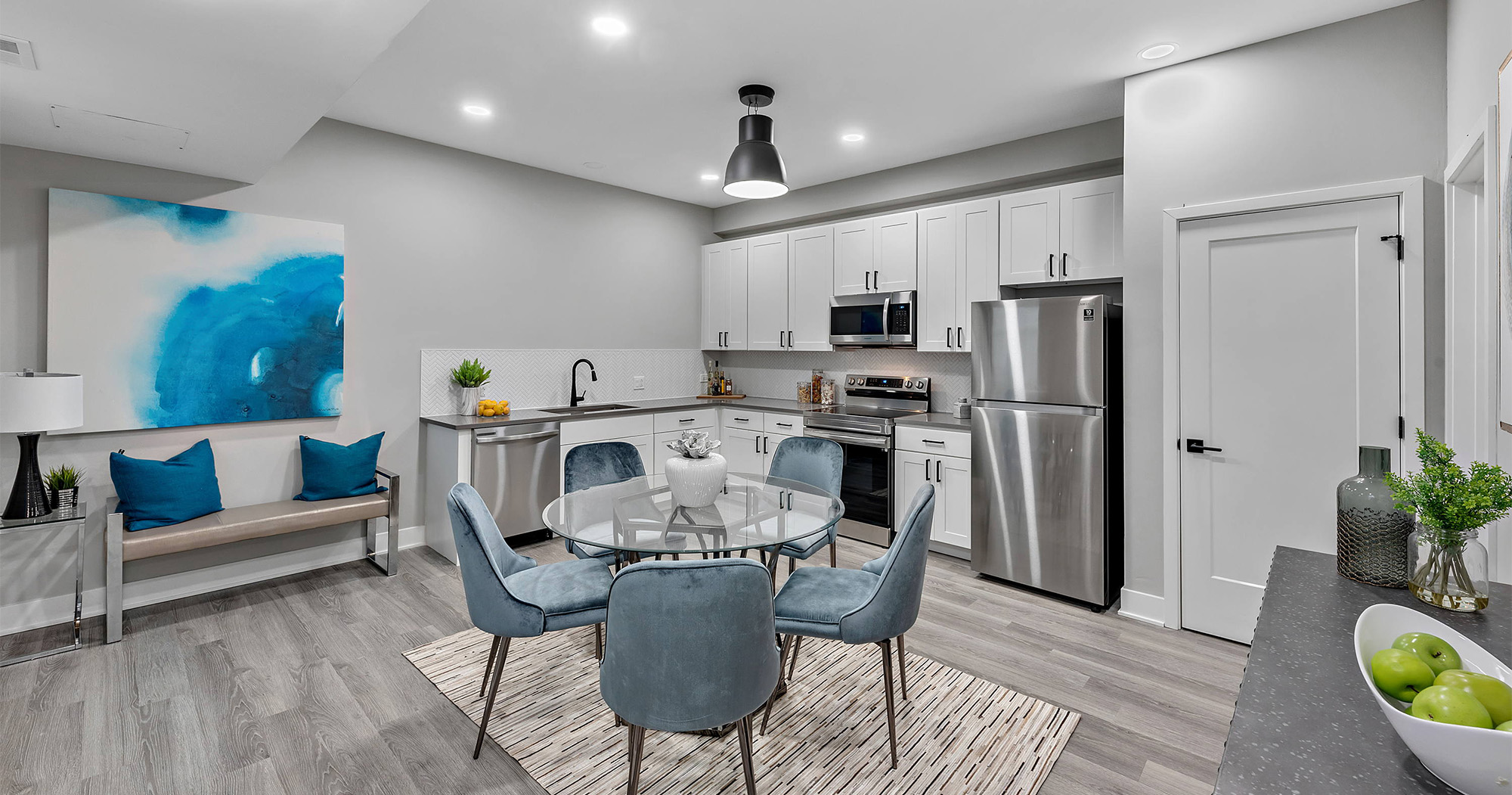
425 Grand Concourse
Bronx, N.Y.
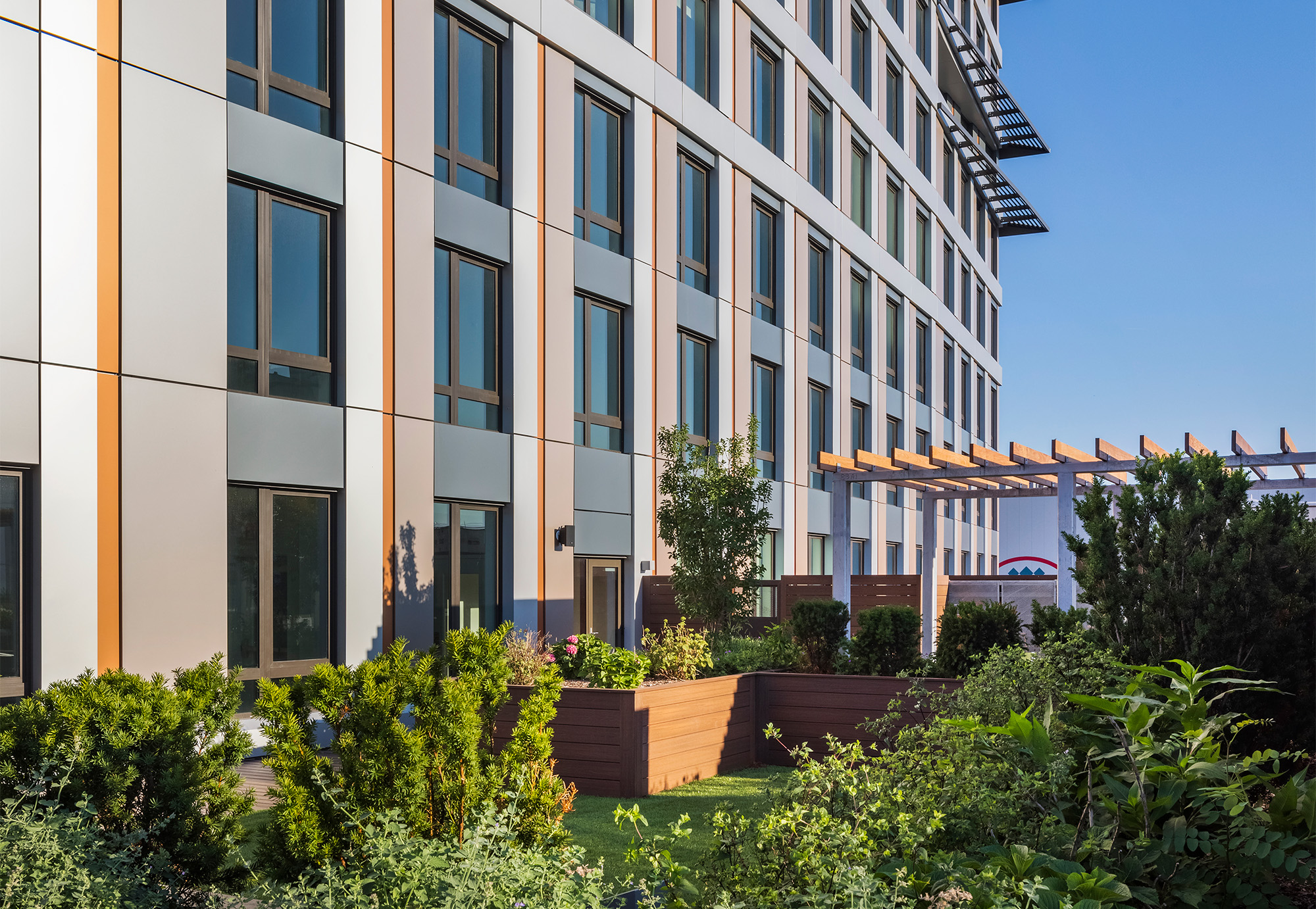
425 Grand Concourse, located in the Bronx, N.Y., is the largest Passive House project in North America to date. At 300,000 sf, Grand Concourse contains 277 affordable housing units (on an income tier basis), a medical facility, supermarket, community support space, and a new student services center for CUNY Hostos, the public community college.
The mixed-use development includes approximately 1,000 REHAU uPVC windows designed to meet PHIUS thermal goals. Built to Passive House standards, the building will consume up to 70% less energy than conventional housing projects, according to the project team. Grand Concourse provides a model for healthy living environments in a district with one of the worst childhood asthma rates in the country (due to high air pollution from heavy traffic and nearby waste transfer stations). Its PHIUS-certified design minimizes the release of harmful, asthma-triggering combustion gasses for tenants.
The building offers residents a wide variety of amenities including a recreation room, landscaped roof terrace, a lounge space, fitness room, laundry rooms, and bike storage. An additional benefit to the tenants at 425 Grand Concourse is that as a part of the development, an online “dashboard” was designed by Bright Power so tenants can—in real-time—review their current energy consumption and compare it with the average building readings.
On the Building Team:
Developer: Trinity Financial and MBD Community Housing Corporation
General Contractor: Monadnock Construction
Architect: Dattner Architects
MEP: Dagher Engineering
Passive House Consultant: Steven Winter Associates, Inc.
Window Manufacturer: Starr Windows & Doors, Inc.
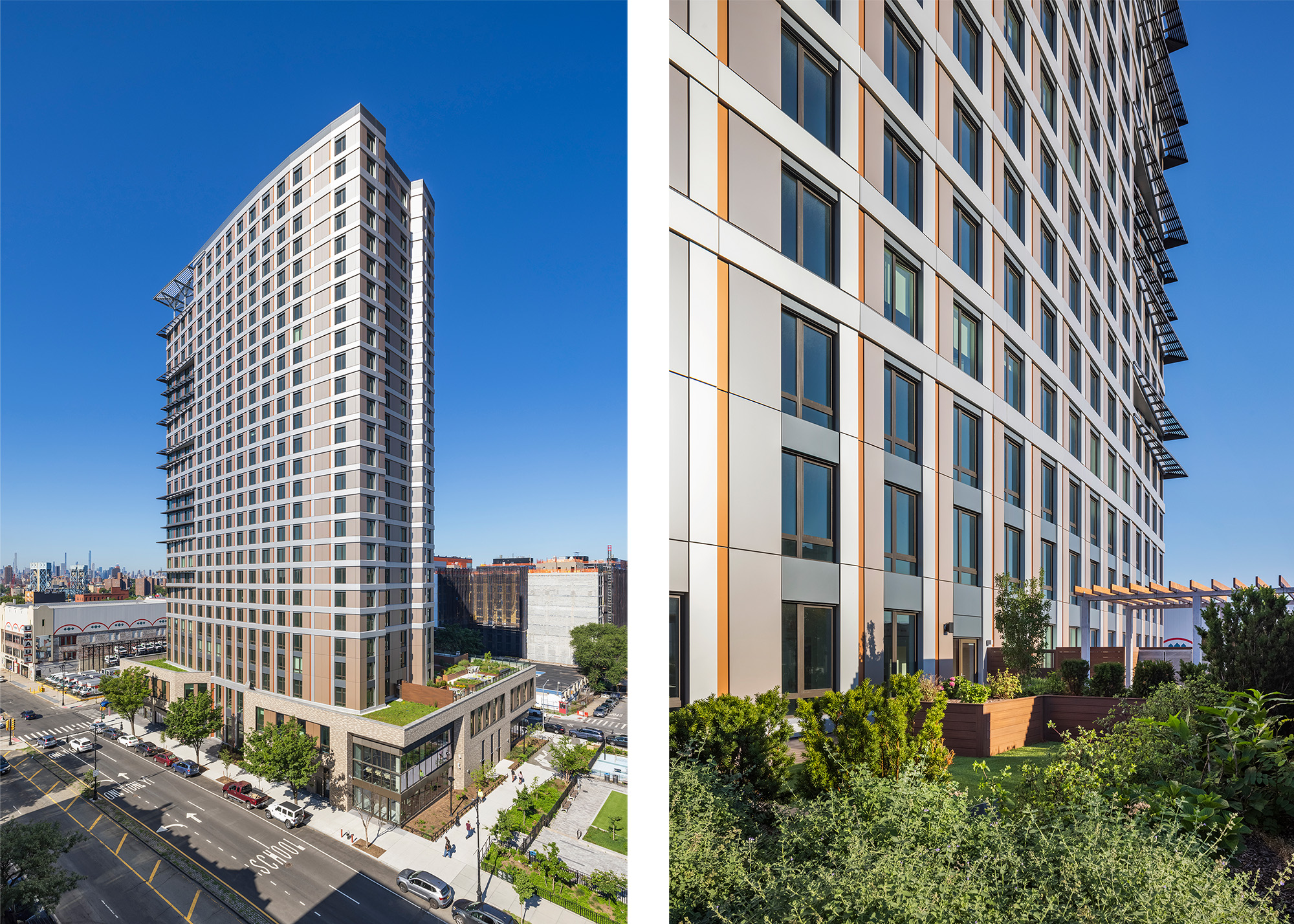
Related Stories
Multifamily Housing | Jul 25, 2023
San Francisco seeks proposals for adaptive reuse of underutilized downtown office buildings
The City of San Francisco released a Request For Interest to identify office building conversions that city officials could help expedite with zoning changes, regulatory measures, and financial incentives.
Multifamily Housing | Jul 13, 2023
Walkable neighborhoods encourage stronger sense of community
Adults who live in walkable neighborhoods are more likely to interact with their neighbors and have a stronger sense of community than people who live in car-dependent communities, according to a report by the Herbert Wertheim School of Public Health and Human Longevity Science at University of California San Diego.
Affordable Housing | Jul 12, 2023
Navigating homelessness with modular building solutions
San Francisco-based architect Chuck Bloszies, FAIA, SE, LEED AP, discusses his firm's designs for Navigation Centers, temporary housing for the homeless in northern California.
Multifamily Housing | Jul 11, 2023
Converting downtown office into multifamily residential: Let’s stop and think about this
Is the office-to-residential conversion really what’s best for our downtowns from a cultural, urban, economic perspective? Or is this silver bullet really a poison pill?
Adaptive Reuse | Jul 10, 2023
California updates building code for adaptive reuse of office, retail structures for housing
The California Building Standards Commission recently voted to make it easier to convert commercial properties to residential use. The commission adopted provisions of the International Existing Building Code (IEBC) that allow developers more flexibility for adaptive reuse of retail and office structures.
Multifamily Housing | Jun 29, 2023
5 ways to rethink the future of multifamily development and design
The Gensler Research Institute’s investigation into the residential experience indicates a need for fresh perspectives on residential design and development, challenging norms, and raising the bar.
Affordable Housing | Jun 27, 2023
Racial bias concerns prompt lawmakers to ask HUD to ban biometric surveillance, including facial recognition
Two members of the U.S. House of Representative have asked the Department of Housing and Urban Development to end the use of biometric technology, including facial recognition, for surveillance purposes in public housing.
Apartments | Jun 27, 2023
Average U.S. apartment rent reached all-time high in May, at $1,716
Multifamily rents continued to increase through the first half of 2023, despite challenges for the sector and continuing economic uncertainty. But job growth has remained robust and new households keep forming, creating apartment demand and ongoing rent growth. The average U.S. apartment rent reached an all-time high of $1,716 in May.
Urban Planning | Jun 15, 2023
Arizona limits housing projects in Phoenix area over groundwater supply concerns
Arizona will no longer grant certifications for new residential developments in Phoenix, it’s largest city, due to concerns over groundwater supply. The announcement indicates that the Phoenix area, currently the nation’s fastest-growing region in terms of population growth, will not be able to sustain its rapid growth because of limited freshwater resources.
Multifamily Housing | Jun 15, 2023
Alliance of Pittsburgh building owners slashes carbon emissions by 45%
The Pittsburgh 2030 District, an alliance of property owners in the Pittsburgh area, says that it has reduced carbon emissions by 44.8% below baseline. Begun in 2012 under the guidance of the Green Building Alliance (GBA), the Pittsburgh 2030 District encompasses more than 86 million sf of space within 556 buildings.


